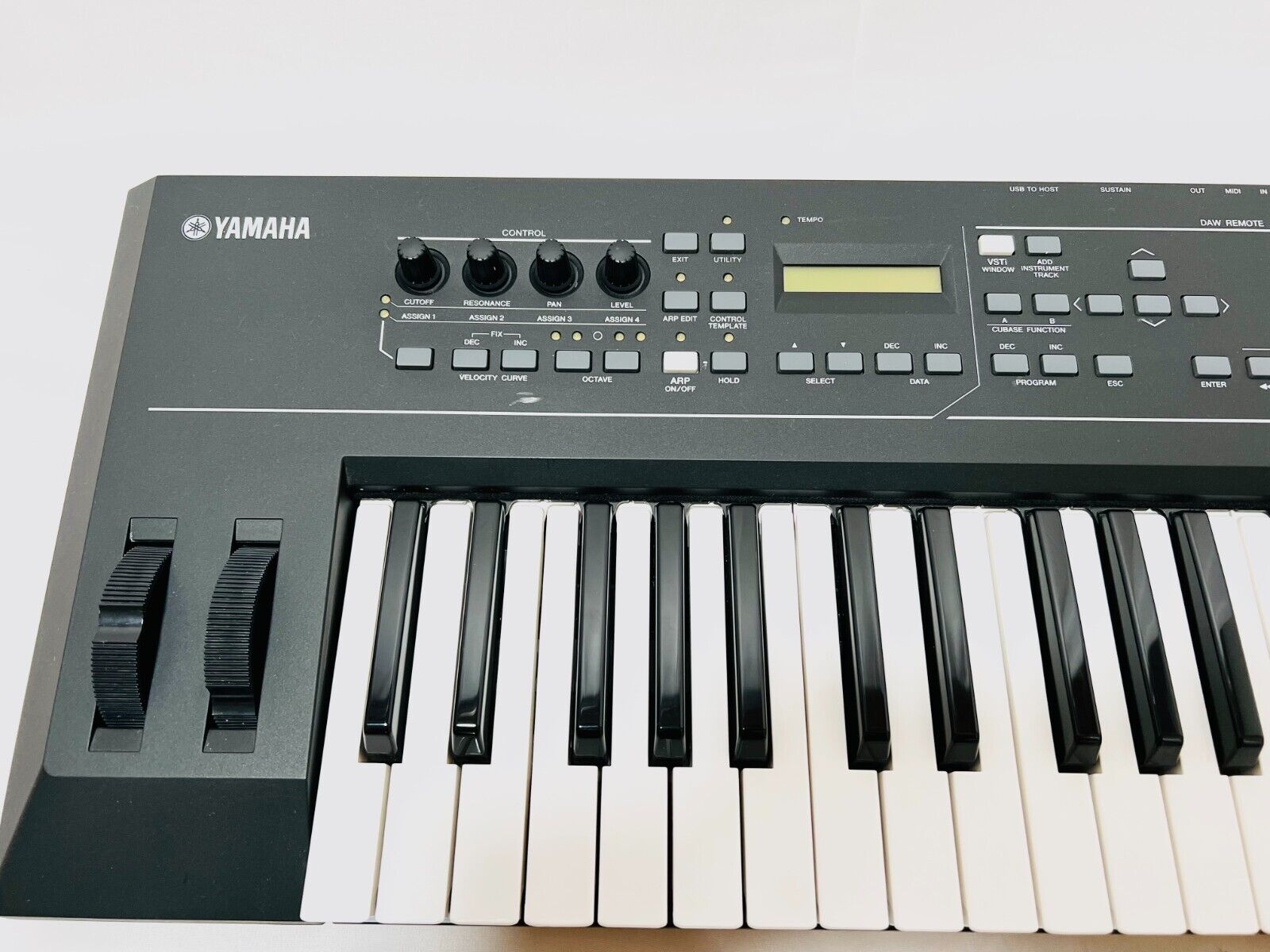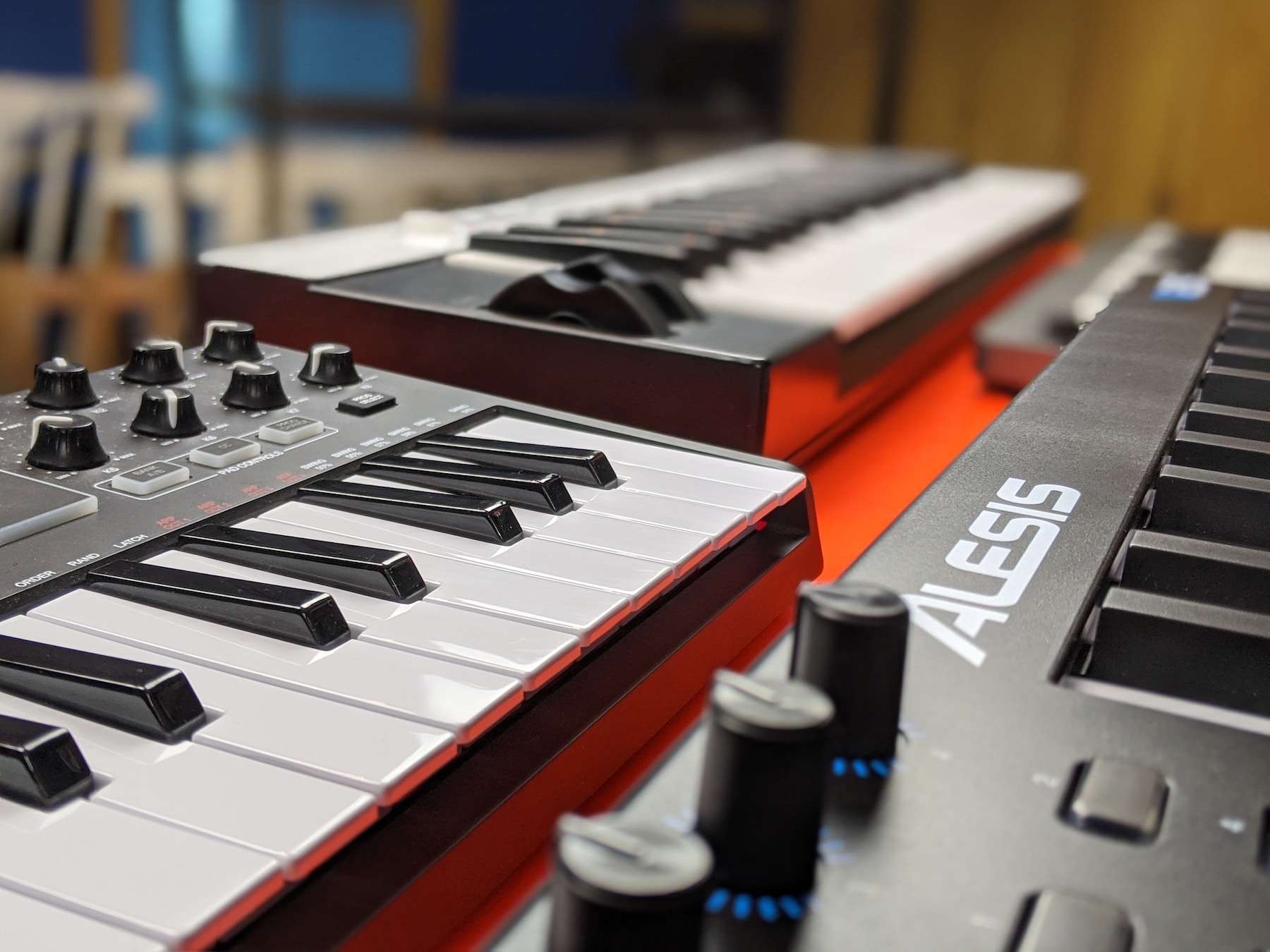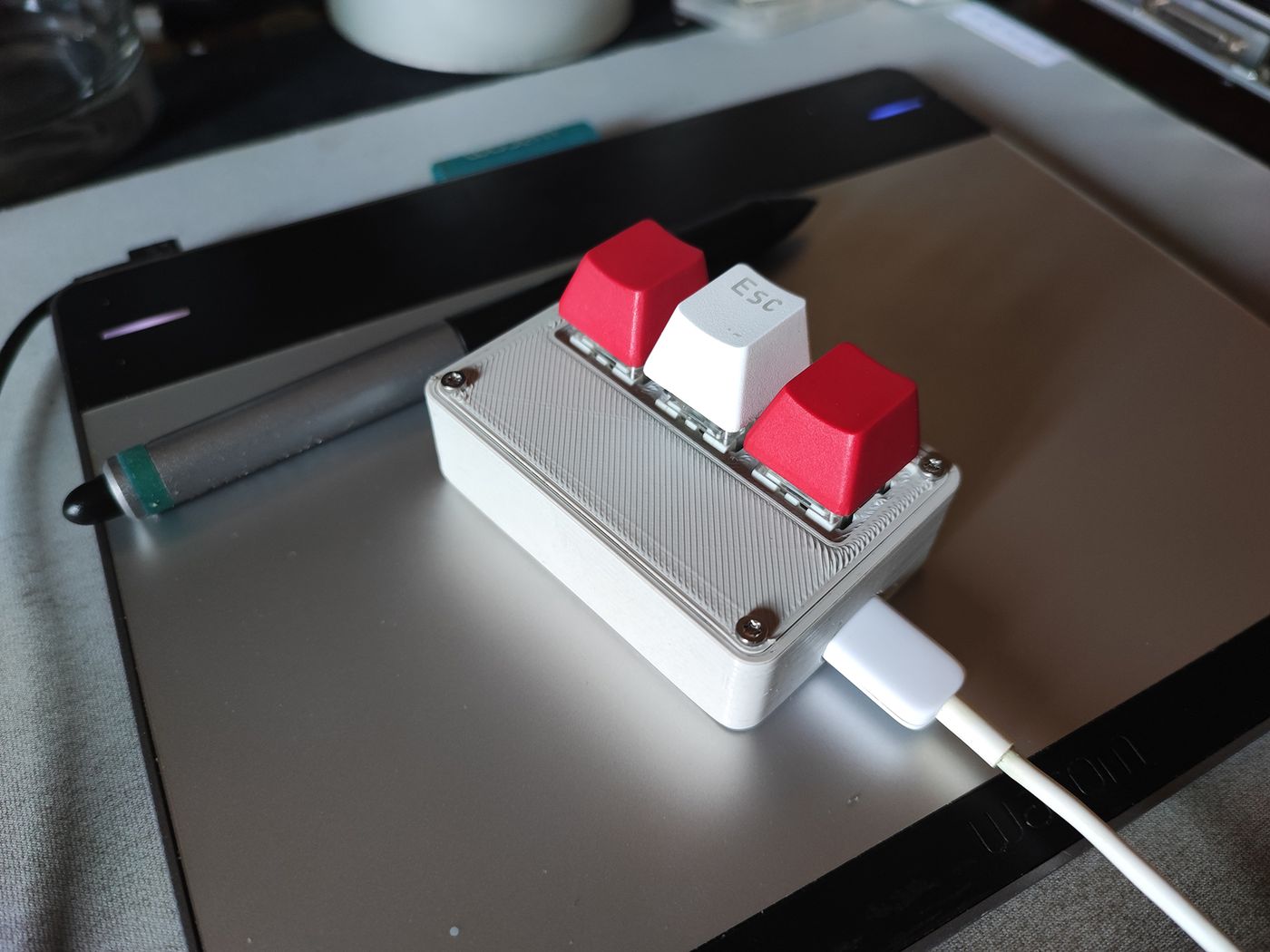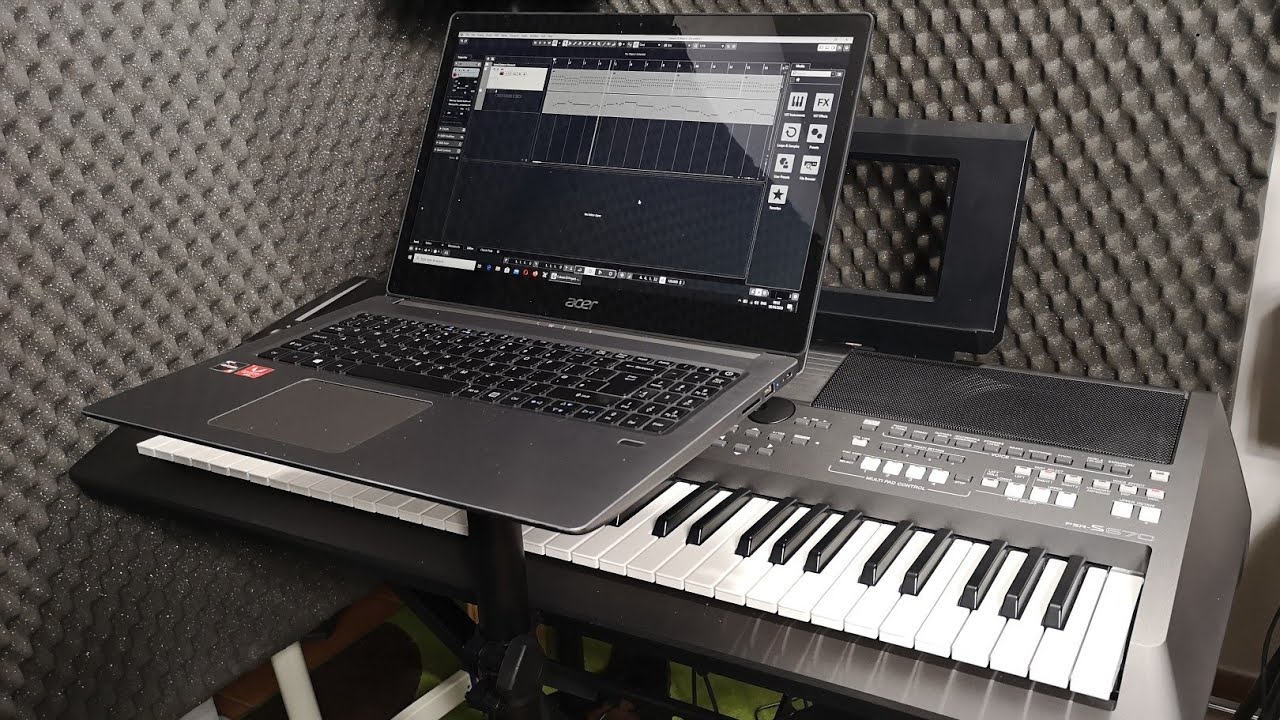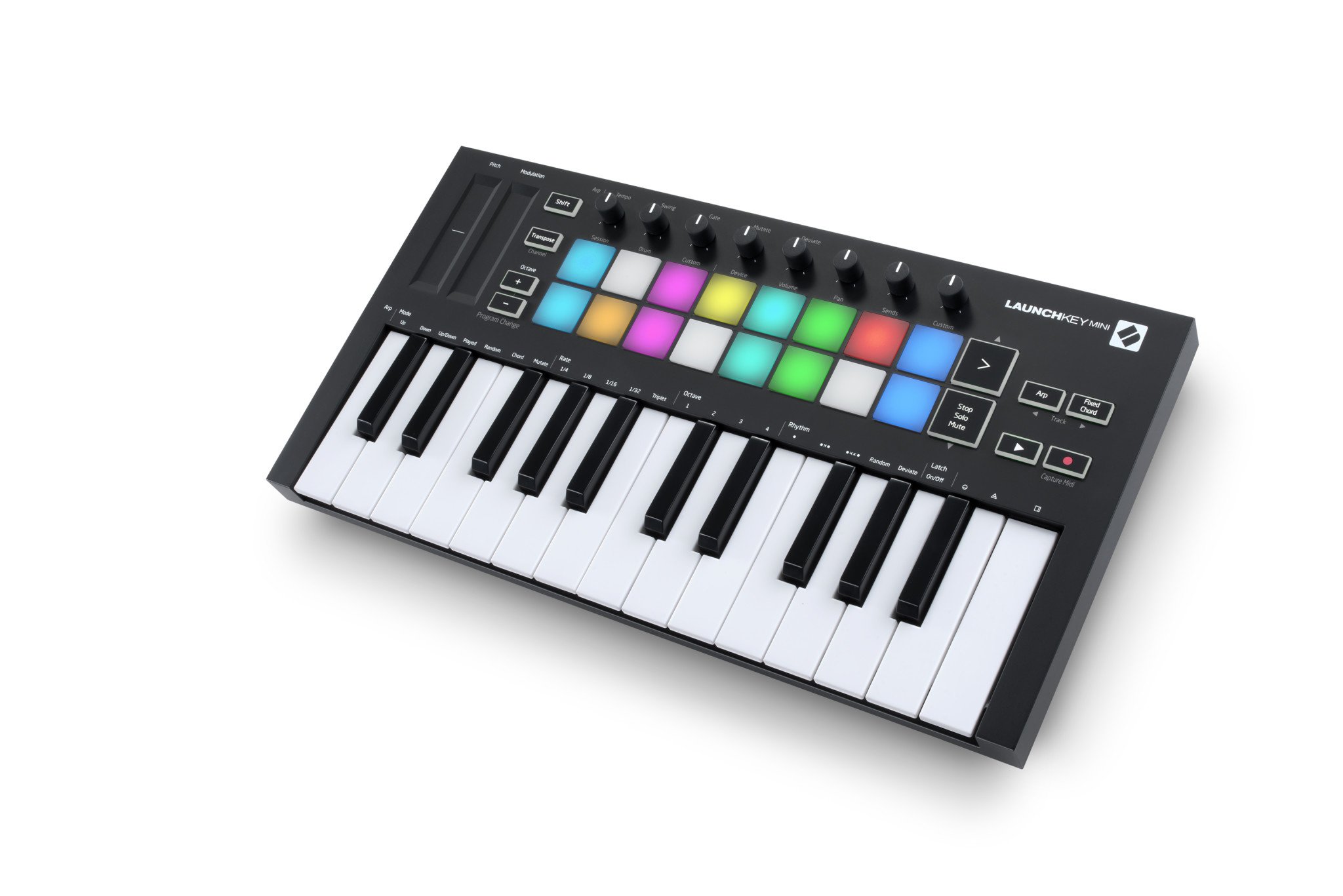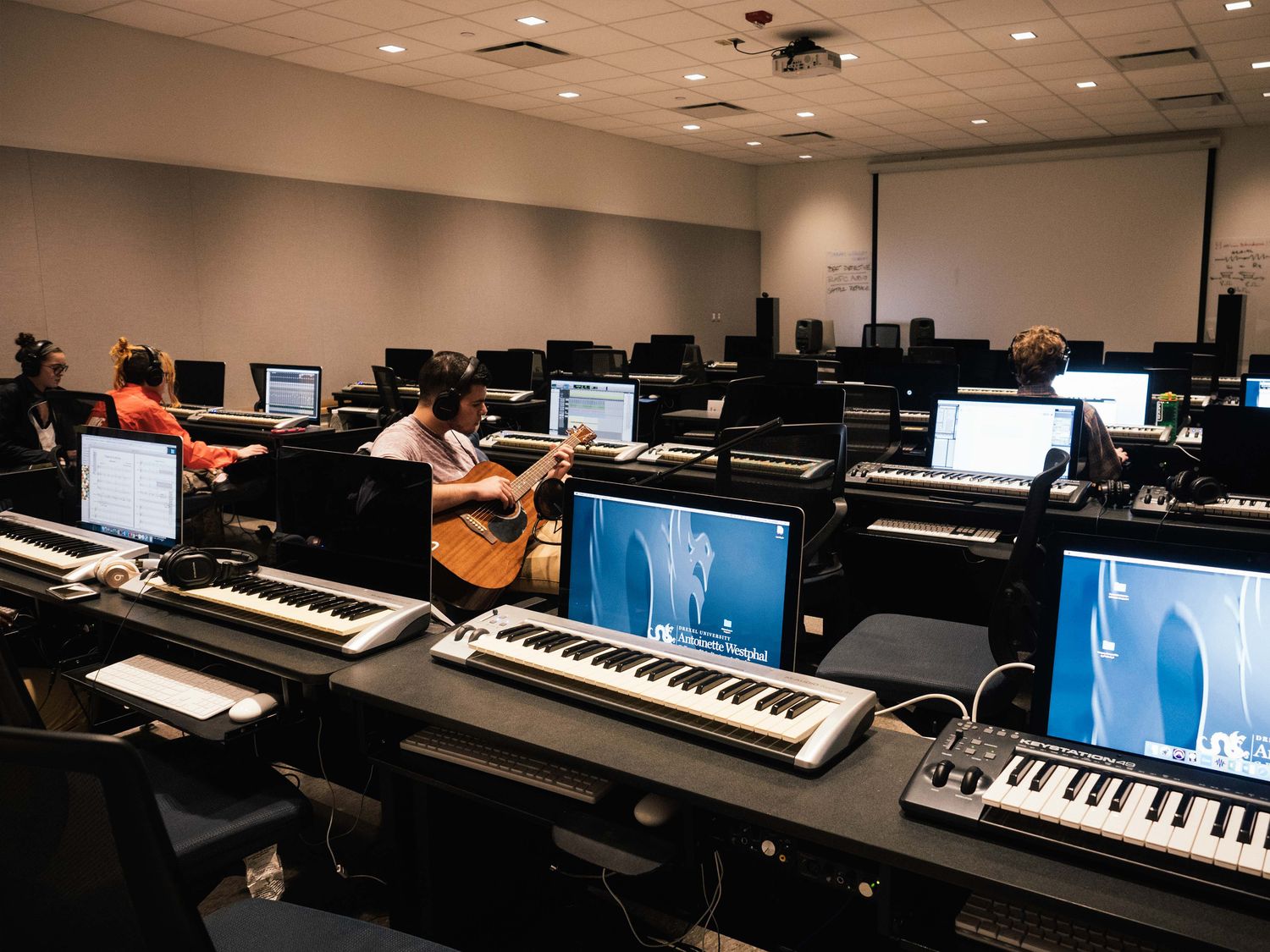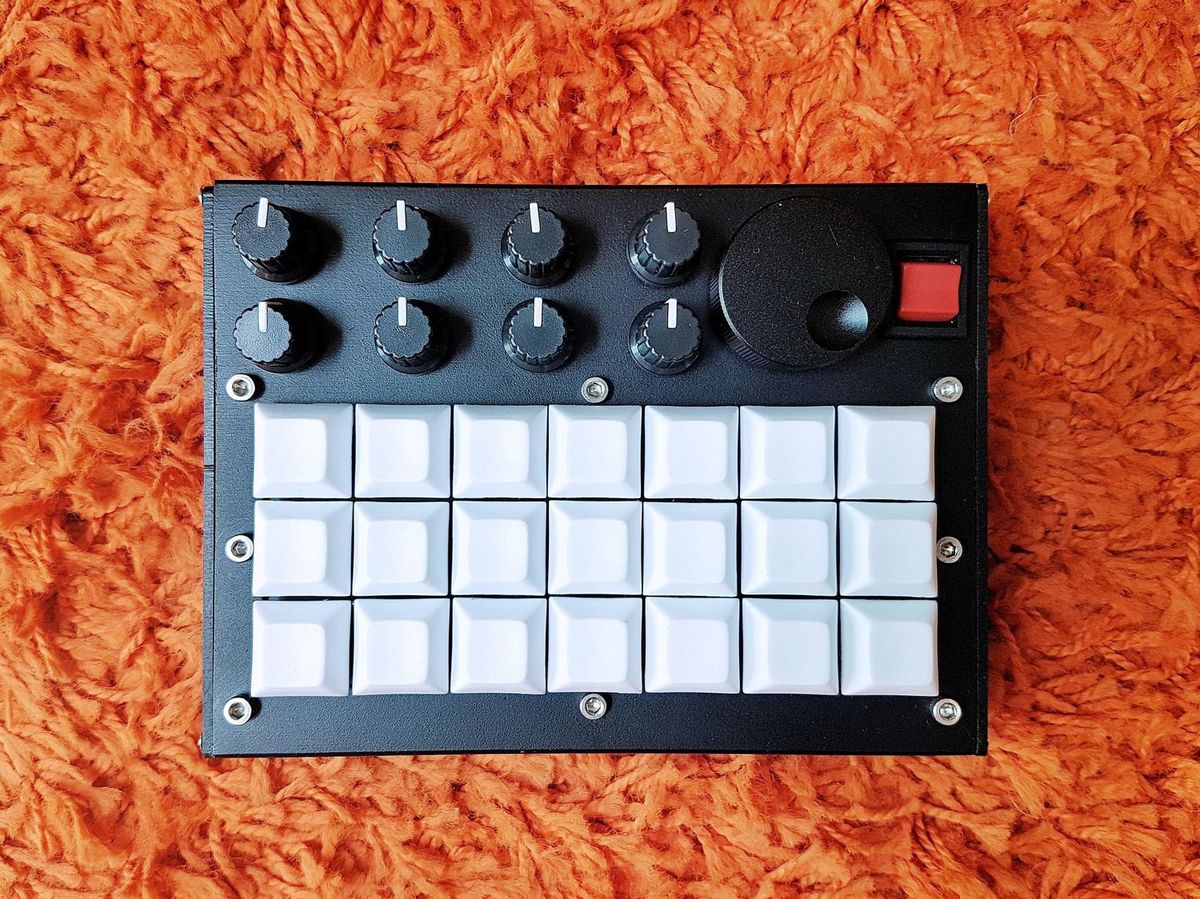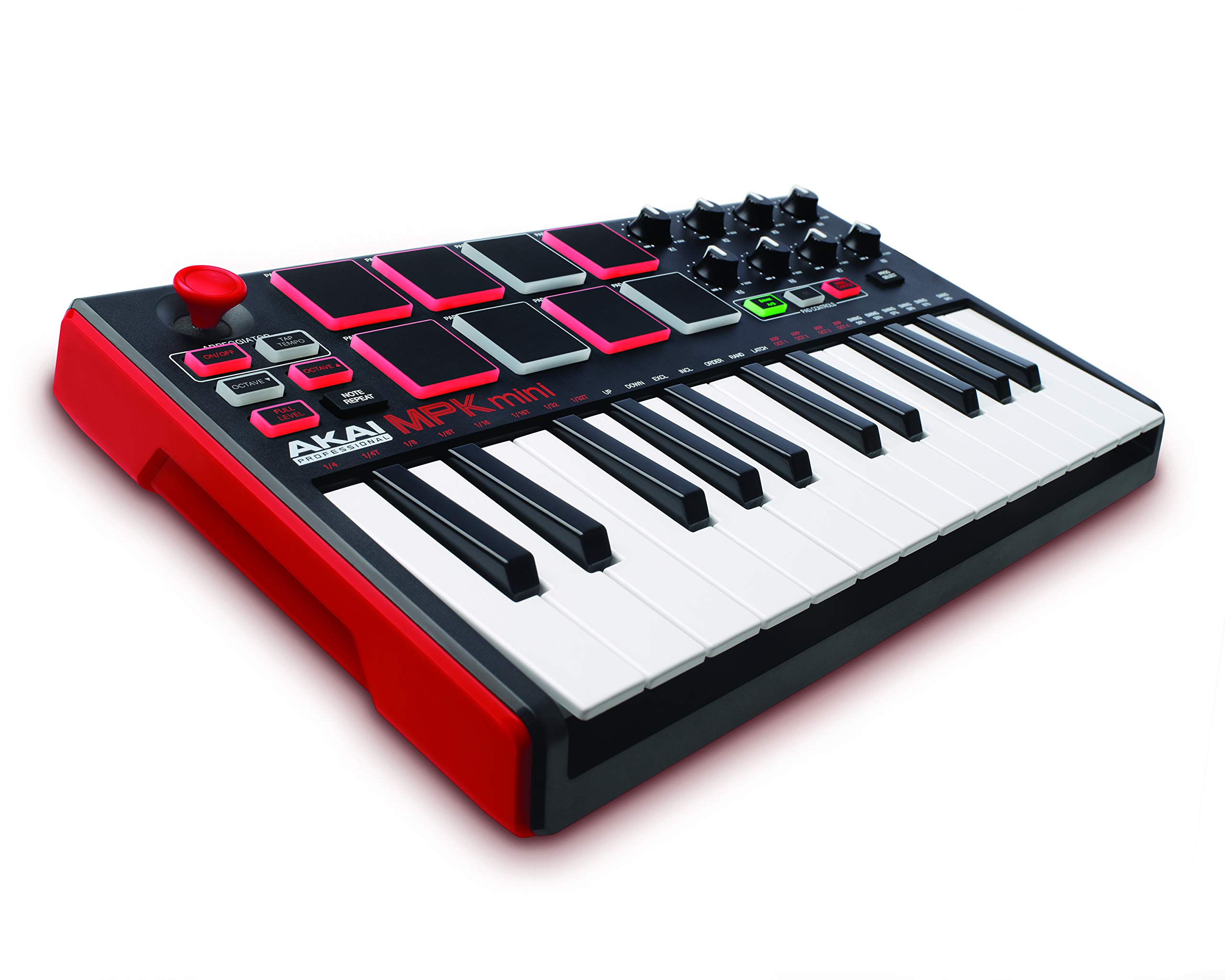Home>Production & Technology>MIDI>How To Use Keyboard As MIDI Controller


MIDI
How To Use Keyboard As MIDI Controller
Modified: March 9, 2024
Learn how to use your keyboard as a MIDI controller and enhance your music production. Discover MIDI capabilities and get started today.
(Many of the links in this article redirect to a specific reviewed product. Your purchase of these products through affiliate links helps to generate commission for AudioLover.com, at no extra cost. Learn more)
Table of Contents
Introduction
Using a keyboard as a MIDI controller is a fantastic way to expand your musical capabilities and creativity. Whether you're a professional musician, a budding producer, or simply a music enthusiast, harnessing the power of your keyboard to control virtual instruments and software can revolutionize your music-making experience. MIDI, which stands for Musical Instrument Digital Interface, allows electronic musical instruments, computers, and other devices to communicate and synchronize with each other. By leveraging your keyboard as a MIDI controller, you can unlock a world of possibilities for creating, recording, and performing music.
In this comprehensive guide, we'll delve into the intricacies of setting up your keyboard as a MIDI controller, selecting the right software, configuring your keyboard, and using it with different Digital Audio Workstations (DAWs). Additionally, we'll explore various tips and tricks to maximize the potential of your keyboard as a MIDI controller, empowering you to elevate your music production and performance skills.
Whether you're a pianist looking to explore electronic music production, a songwriter seeking new ways to compose, or a DJ aiming to integrate live instrumentation into your sets, understanding how to use your keyboard as a MIDI controller can be a game-changer. So, let's embark on this enlightening journey to unlock the full potential of your keyboard and unleash your musical creativity like never before.
Setting Up Your Keyboard as a MIDI Controller
Setting up your keyboard as a MIDI controller is the gateway to a world of endless musical possibilities. Whether you have a traditional piano-style keyboard or a compact MIDI controller, the process of configuring it to communicate with your computer or other devices is relatively straightforward. Here's a step-by-step guide to help you get started:
-
Connect Your Keyboard: Begin by connecting your keyboard to your computer or MIDI interface using a USB cable or MIDI cables, depending on the available connectivity options. Many modern keyboards feature USB connectivity, simplifying the setup process by allowing direct communication with your computer.
-
Install MIDI Drivers: If your keyboard requires specific MIDI drivers to communicate with your computer, ensure that you have installed the necessary drivers. These drivers facilitate the interaction between your keyboard and the software on your computer, enabling seamless MIDI communication.
-
Select MIDI Input/Output: Once your keyboard is connected and the drivers are installed, you'll need to specify the MIDI input and output settings within your music production software or Digital Audio Workstation (DAW). This step ensures that your keyboard is recognized as a MIDI input device, allowing it to transmit musical data to your software.
-
Verify MIDI Connectivity: After configuring the MIDI input and output settings, it's essential to verify the connectivity between your keyboard and your music production software. Test the MIDI communication by playing notes on your keyboard and confirming that the corresponding MIDI data is received by your software.
-
Calibrate MIDI Settings: Depending on your specific keyboard model and software, you may need to calibrate MIDI settings to ensure optimal performance. This calibration process involves adjusting parameters such as velocity sensitivity, MIDI channel assignment, and controller mapping to align with your creative preferences and workflow.
-
Test MIDI Control Features: Explore the MIDI control features of your keyboard, such as knobs, sliders, and modulation wheels, to ascertain their functionality within your music production software. These control elements can be mapped to various parameters within your software, offering tactile manipulation of virtual instruments and effects.
By following these steps, you can effectively set up your keyboard as a MIDI controller, paving the way for a seamless integration of physical and digital musical tools. Once your keyboard is configured as a MIDI controller, you'll be ready to harness its expressive capabilities to compose, perform, and produce music with unparalleled flexibility and creativity.
Choosing the Right Software
Selecting the appropriate software is a crucial aspect of utilizing your keyboard as a MIDI controller. The software you choose will determine the breadth of features, compatibility with your keyboard, and overall user experience. When exploring the myriad of options available, consider the following factors to make an informed decision:
Compatibility and Integration
The chosen software should seamlessly integrate with your keyboard, ensuring smooth communication and functionality. Verify that the software supports MIDI input from your specific keyboard model and offers comprehensive compatibility with your operating system. Additionally, assess the software's ability to recognize and utilize the full range of MIDI control features present on your keyboard, including keys, pads, knobs, and faders.
Versatility and Feature Set
Evaluate the versatility and feature set of the software to align with your musical objectives. Look for software that provides a diverse array of virtual instruments, synthesizers, and effects, enabling you to explore different sonic palettes and genres. Furthermore, consider the availability of MIDI mapping capabilities within the software, allowing you to intuitively assign MIDI controls to various parameters for enhanced expressive control and customization.
User Interface and Workflow
The user interface of the software plays a pivotal role in your creative process. Opt for software with an intuitive and user-friendly interface, facilitating a seamless workflow and minimizing the learning curve. A well-designed user interface can enhance your efficiency and creativity, empowering you to focus on musical expression rather than technical intricacies.
Performance and Stability
Reliability is paramount when selecting software for MIDI control. Prioritize software known for its stability and optimized performance, especially during live performances and recording sessions. A robust and stable software platform ensures that your keyboard functions as a dependable MIDI controller, delivering consistent and responsive performance across various musical scenarios.
Community and Support
Consider the availability of a supportive user community and comprehensive technical support for the chosen software. Access to user forums, tutorials, and responsive customer support can significantly aid in troubleshooting, learning advanced techniques, and maximizing the potential of the software for MIDI control and music production.
By carefully considering these factors, you can make an informed decision when choosing the right software for utilizing your keyboard as a MIDI controller. Whether you opt for a dedicated digital audio workstation (DAW) with extensive MIDI capabilities or specialized MIDI mapping software, prioritizing compatibility, versatility, usability, performance, and support will empower you to leverage your keyboard to its fullest potential in your musical endeavors.
Configuring Your Keyboard
Configuring your keyboard for optimal MIDI control involves tailoring its settings to align with your specific musical preferences and production workflow. By customizing various parameters and functionalities, you can harness the full potential of your keyboard as a versatile MIDI controller. Here's a detailed exploration of the essential steps involved in configuring your keyboard for seamless MIDI control:
MIDI Channel Assignment
Assigning MIDI channels to different sections of your keyboard allows for independent control over multiple virtual instruments or sound modules within your music production software. By designating distinct MIDI channels to the keyboard's various sections, such as the keys, pads, and control knobs, you can create a cohesive setup for manipulating diverse sound sources simultaneously.
Velocity Sensitivity Adjustment
Many keyboards feature velocity-sensitive keys, meaning the force with which a key is struck influences the volume and timbre of the produced sound. Configuring the velocity sensitivity settings enables you to fine-tune the key response to suit your playing style and performance dynamics. Whether you prefer a gentle touch for subtle nuances or a more aggressive approach for expressive articulation, adjusting the velocity sensitivity ensures an authentic and responsive playing experience.
MIDI Control Mapping
Explore the MIDI control mapping capabilities of your keyboard, which allow you to assign specific MIDI messages to various control elements such as knobs, sliders, and modulation wheels. This mapping empowers you to tailor the behavior of these controls within your music production software, facilitating real-time manipulation of parameters such as filter cutoff, resonance, envelope settings, and more. By customizing the MIDI control mapping, you can create a personalized interface for sculpting and shaping your sonic creations with precision and creativity.
Aftertouch Configuration
If your keyboard supports aftertouch, a pressure-sensitive feature that activates upon continued pressure applied to a key after it has been struck, configuring its settings can enhance your expressive capabilities. Adjusting aftertouch parameters allows you to modulate effects, filters, and other parameters in real time, adding depth and nuance to your performances and recordings.
Controller Assignments and Presets
Many modern keyboards offer extensive controller assignments and preset functionalities, enabling you to save and recall custom configurations tailored to specific musical contexts or production scenarios. By creating and organizing presets for different virtual instruments, effects, or performance setups, you can streamline your creative process and seamlessly transition between various musical arrangements and settings.
By meticulously configuring these aspects of your keyboard, you can establish a tailored MIDI control environment that harmonizes with your artistic vision and technical requirements. This personalized configuration empowers you to unleash your creativity, infuse expressive nuances into your music, and seamlessly integrate your keyboard into your digital music production ecosystem.
Using Your Keyboard as a MIDI Controller in Different DAWs
Utilizing your keyboard as a MIDI controller across various Digital Audio Workstations (DAWs) opens up a realm of creative possibilities, allowing you to seamlessly integrate physical expression with digital music production. Each DAW offers unique features, workflows, and MIDI implementation, necessitating an understanding of how to effectively harness your keyboard's MIDI capabilities within different software environments. Here's an insightful exploration of using your keyboard as a MIDI controller in different DAWs, empowering you to navigate diverse musical landscapes with ease and proficiency.
Ableton Live
Ableton Live, renowned for its intuitive session view and real-time performance capabilities, provides robust MIDI control features ideal for keyboard integration. By configuring MIDI mappings and utilizing Ableton's flexible MIDI routing, you can assign your keyboard's controls to various parameters within Live's instruments, effects, and mixer, enabling dynamic manipulation and expressive performances.
Logic Pro X
Logic Pro X boasts comprehensive MIDI functionality, offering seamless integration with MIDI controllers such as keyboards. Leveraging Logic's smart controls and MIDI assignment options, you can map your keyboard's knobs, faders, and modulators to a myriad of software parameters, fostering a tactile and immersive music production experience.
FL Studio
FL Studio's versatile MIDI control capabilities make it an ideal platform for utilizing your keyboard as a MIDI controller. With FL Studio's robust MIDI mapping features and support for multiple MIDI devices, you can effortlessly configure your keyboard to interact with virtual instruments, effects, and mixer controls, facilitating fluid music creation and performance.
Pro Tools
In Pro Tools, leveraging your keyboard as a MIDI controller enhances the creative process and facilitates precise control over virtual instruments and software parameters. By configuring MIDI input settings and mapping your keyboard's controls to Pro Tools' extensive array of functions, you can seamlessly integrate your keyboard into your Pro Tools workflow, empowering intuitive music production and recording.
Cubase
Cubase's comprehensive MIDI functionality empowers you to harness the expressive capabilities of your keyboard as a MIDI controller. Through Cubase's intuitive MIDI mapping and device setup, you can seamlessly integrate your keyboard into Cubase's environment, enabling dynamic control over virtual instruments, effects, and mixing parameters with unparalleled precision and flexibility.
By adeptly utilizing your keyboard as a MIDI controller across different DAWs, you can transcend traditional boundaries and immerse yourself in a versatile and expressive music production journey. Whether you're composing, performing, or producing, the seamless integration of your keyboard as a MIDI controller across diverse software environments amplifies your creative potential and augments your musical endeavors.
Tips and Tricks for Using Your Keyboard as a MIDI Controller
Harnessing the full potential of your keyboard as a MIDI controller involves delving into a realm of tips and tricks that can elevate your music production and performance capabilities. By integrating these insightful strategies into your workflow, you can unlock new dimensions of creativity and efficiency, transforming your keyboard into a versatile tool for musical expression. Here's a comprehensive exploration of valuable tips and tricks for maximizing the utility of your keyboard as a MIDI controller:
1. Explore MIDI Mapping Templates
Many keyboards offer pre-configured MIDI mapping templates tailored to popular Digital Audio Workstations (DAWs) and software instruments. Exploring and utilizing these templates can expedite the setup process, enabling seamless integration of your keyboard's controls with a myriad of software parameters. By leveraging MIDI mapping templates, you can swiftly establish a cohesive connection between your keyboard and your preferred music production software, streamlining your creative process.
2. Dynamic Key Assignments
Experiment with dynamic key assignments to expand the functionality of your keyboard as a MIDI controller. Assigning specific functions, such as octave shifting, transposition, or triggering performance macros, to designated keys empowers you to adapt your keyboard's layout to diverse musical contexts and performance requirements. This dynamic flexibility enhances your expressive control and adaptability during live performances and studio sessions.
3. Utilize Multi-Zone Capabilities
If your keyboard supports multi-zone functionality, leverage this feature to divide the keyboard into distinct MIDI control regions. By assigning different MIDI channels and control parameters to each zone, you can simultaneously manipulate multiple virtual instruments or software modules, creating layered textures, split keyboard setups, or intricate performance configurations. The multi-zone capabilities amplify your creative palette, enabling complex and nuanced musical expression.
4. MIDI Control Surface Integration
Explore the integration of your keyboard as a MIDI control surface within your chosen DAW. Many DAWs offer dedicated control surface support, allowing you to map your keyboard's controls to various mixer parameters, transport functions, and software navigation. By transforming your keyboard into a versatile control surface, you can streamline mixing, automation, and overall DAW navigation, enhancing your efficiency and workflow optimization.
5. Customize Aftertouch Parameters
If your keyboard features aftertouch functionality, customize its parameters to imbue your performances with expressive nuances. Adjusting aftertouch sensitivity, response curves, and assigned modulation destinations empowers you to infuse your playing with dynamic articulations, subtle vibrato, and evolving timbral shifts. The personalized aftertouch configuration adds depth and emotive qualities to your musical expressions, enriching your performances and recordings.
By integrating these tips and tricks into your approach to using your keyboard as a MIDI controller, you can embark on a transformative journey of musical exploration and innovation. The seamless fusion of technological capabilities and artistic expression empowers you to push the boundaries of creativity, expand your sonic horizons, and infuse your music with unparalleled depth and emotion.
Conclusion
In conclusion, the utilization of your keyboard as a MIDI controller transcends conventional boundaries, offering a gateway to boundless creativity and musical exploration. By embarking on the journey of setting up, configuring, and integrating your keyboard into the realm of MIDI control, you have unlocked a myriad of opportunities to elevate your music production, performance, and compositional capabilities.
The seamless integration of your keyboard as a MIDI controller empowers you to bridge the physical and digital realms of music, allowing for expressive manipulation of virtual instruments, effects, and software parameters. Whether you are a pianist seeking to delve into electronic music production, a producer aiming to infuse live instrumentation into your compositions, or a performer looking to expand your sonic palette, the adept use of your keyboard as a MIDI controller opens up a world of possibilities.
Furthermore, the careful selection of software, meticulous configuration of MIDI settings, and adept utilization of your keyboard as a MIDI controller across various Digital Audio Workstations (DAWs) have equipped you with the tools to navigate diverse musical landscapes with proficiency and finesse. The ability to seamlessly integrate your keyboard into different software environments amplifies your creative potential, enabling you to adapt to varying workflows and musical contexts with ease.
Moreover, the incorporation of valuable tips and tricks into your workflow, such as exploring MIDI mapping templates, dynamic key assignments, multi-zone capabilities, MIDI control surface integration, and customized aftertouch parameters, has enriched your approach to using your keyboard as a MIDI controller. These strategies empower you to infuse your music with expressive nuances, dynamic control, and personalized touches, fostering a deeper connection between your artistic vision and technological capabilities.
In essence, the journey of harnessing your keyboard as a MIDI controller is not merely a technical endeavor but a transformative exploration of musical expression and innovation. By seamlessly integrating the tactile and expressive qualities of your keyboard with the boundless possibilities of digital music production, you have embarked on a path that amplifies your creative potential and redefines the boundaries of musical artistry. Embrace this journey with curiosity, passion, and a spirit of endless discovery, as you continue to shape and redefine the landscape of your musical endeavors through the versatile and expressive capabilities of your keyboard as a MIDI controller.


